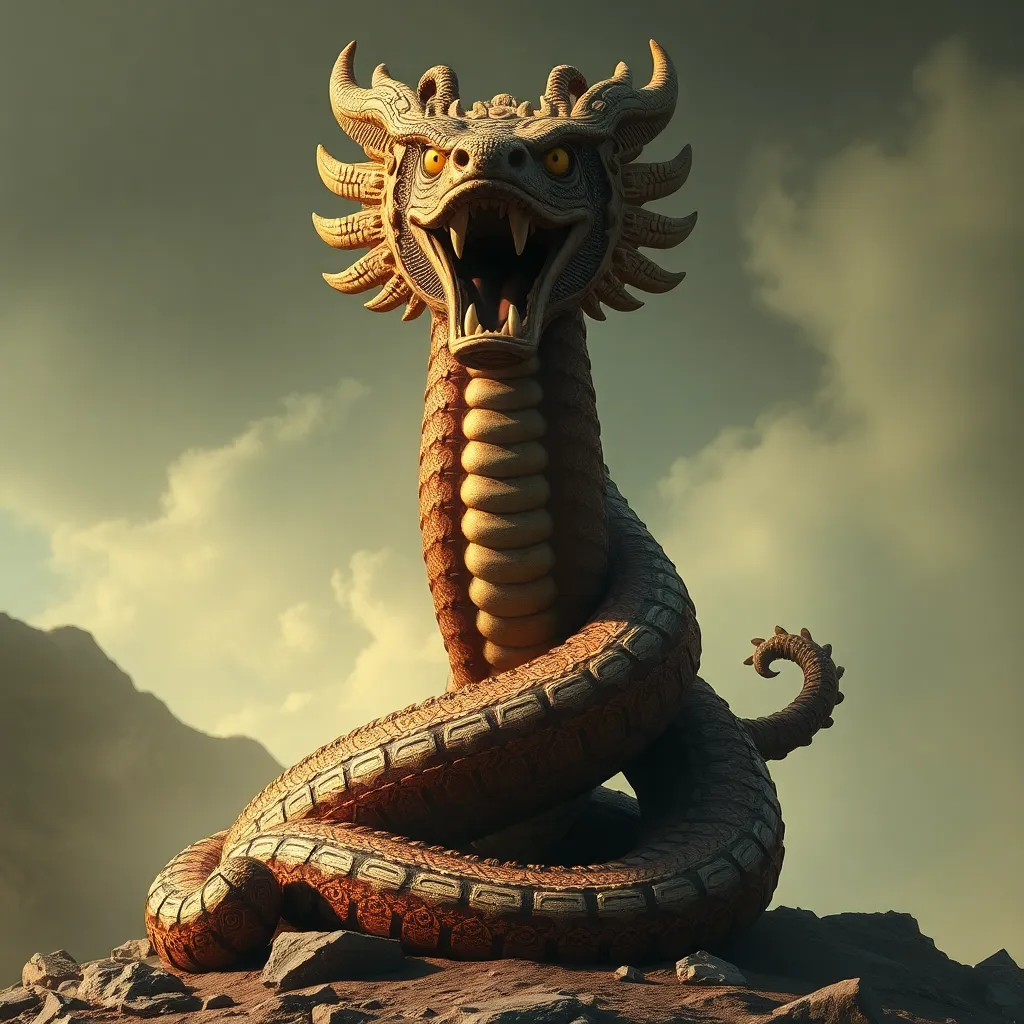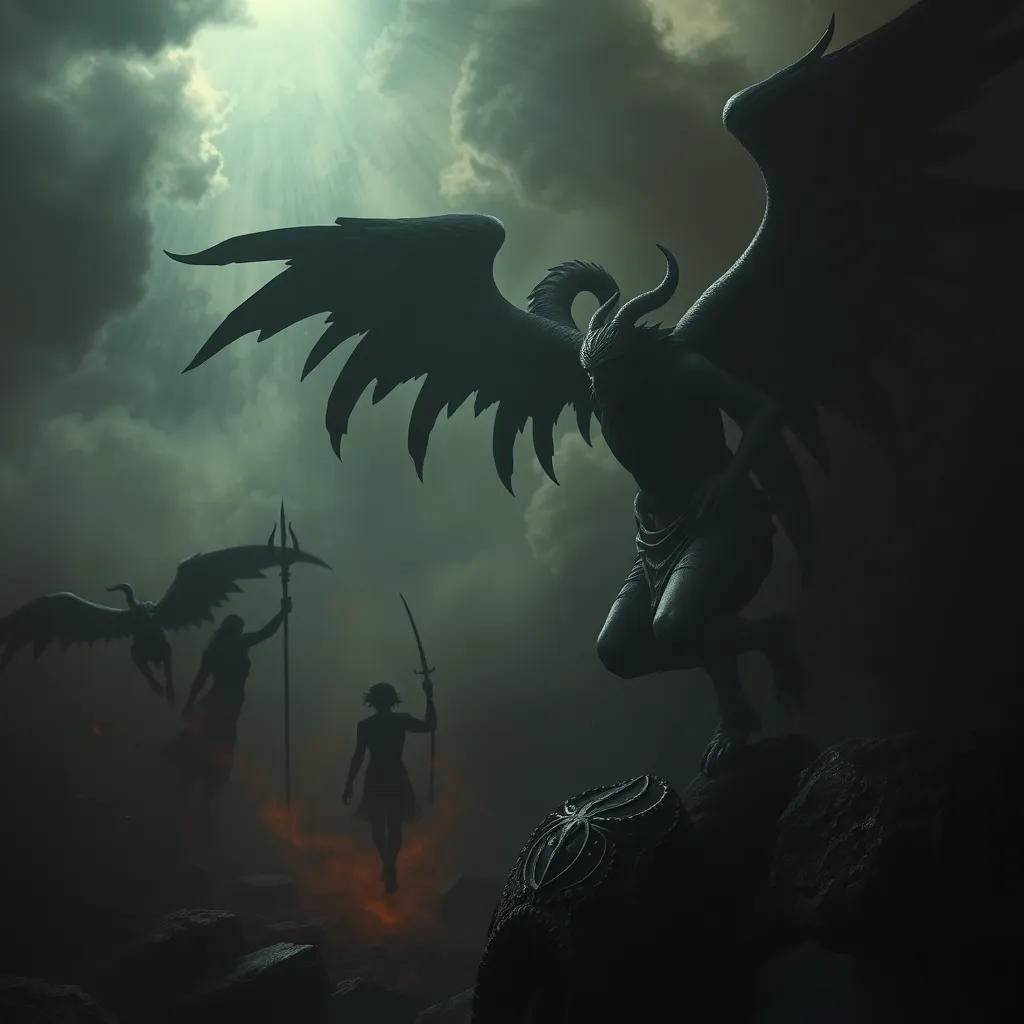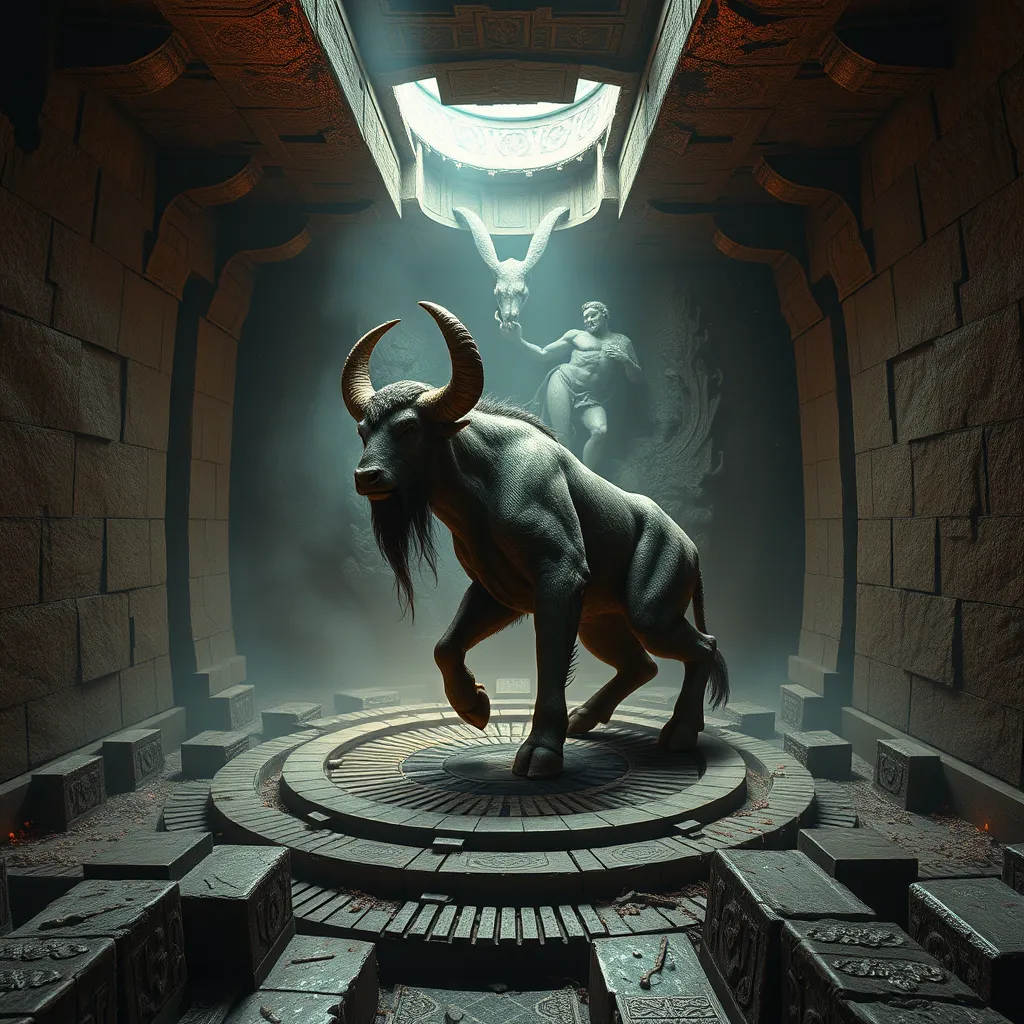The Cosmic Serpent Across Cultures: Comparing Cipactli with Similar Figures in Other Mythologies
I. Introduction
The Cosmic Serpent is a powerful archetype that appears in various mythologies around the world, representing themes of creation, destruction, and transformation. These serpentine figures often embody duality, serving as both creators and destroyers within their respective mythologies. One notable example is Cipactli, a primordial creature in Aztec mythology, who plays a crucial role in the creation story of the world.
This article aims to explore Cipactli’s significance in Aztec cosmology and compare it with similar serpentine figures across different cultures, highlighting the common themes and unique characteristics that define these celestial beings.
II. Cipactli: The Aztec Creation Monster
Cipactli is described as a monstrous, alligator-like creature, often depicted with a body covered in scales and a mouth filled with sharp teeth. Its name translates to “crocodile” in Nahuatl, reflecting its physical attributes and fierce nature. In Aztec mythology, Cipactli symbolizes the chaotic forces of creation and the raw materials of the universe.
In the creation myth, Cipactli is said to have existed before the formation of the world, embodying the primordial chaos from which the cosmos emerged. According to the myth, the gods Tezcatlipoca and Quetzalcoatl sought to create the world from Cipactli’s body. They ultimately succeeded, using its flesh to form the earth, while its blood was used to create the stars and other celestial bodies.
Cipactli’s significance lies in its representation of duality; it is both a source of life and a potential force of destruction. As the foundation of creation, Cipactli demonstrates how chaos can give rise to order, embodying the delicate balance between creation and annihilation.
III. The Serpent in Mesoamerican Mythology
In addition to Cipactli, Mesoamerican mythology is rich with serpentine figures, notably Quetzalcoatl, the Feathered Serpent. Quetzalcoatl is one of the most important deities in Aztec and other Mesoamerican cultures, often depicted as a serpent adorned with feathers.
A. Quetzalcoatl: The Feathered Serpent
Quetzalcoatl has varied origins and characteristics, often associated with wind, air, and learning. He is credited with the creation of humanity, having fashioned people from his own blood and provided them with the knowledge necessary to cultivate crops and develop civilizations.
1. Origins and Characteristics
Quetzalcoatl is considered a god of wind and wisdom, embodying the principles of knowledge and civilization. His dual nature as both a serpent and a feathered being signifies the connection between the earthly and the divine.
2. Role in Creation and Civilization
Quetzalcoatl’s influence extends beyond creation; he is also seen as a promoter of culture, teaching humanity skills such as agriculture, writing, and art. This aligns with the themes of transformation and regeneration associated with cosmic serpents.
The significance of serpents in Mesoamerican cultures cannot be overstated. They are often associated with fertility, water, and agricultural abundance, reflecting the interconnectedness of life and nature.
IV. The Cosmic Serpent in Ancient Egyptian Mythology
In Ancient Egyptian mythology, the serpent Apep (or Apophis) represents chaos and destruction. Unlike Cipactli, who embodies creation, Apep is a symbol of the forces that threaten the order of the universe.
A. Apep (Apophis): The Serpent of Chaos
Apep is depicted as a massive serpent that resides in the underworld, opposing the sun god Ra as he journeys through the night. Apep’s characteristics and symbolism align with the idea of chaos as a necessary counterpart to order.
1. Characteristics and Symbolism
Apep is often described as a great serpent or dragon, embodying darkness and chaos. He is feared by the gods and represents the eternal struggle against disorder.
2. Role in the Cycle of Life, Death, and Rebirth
Apep’s battles with Ra highlight the cyclical nature of life and death, where chaos constantly challenges the established order. This mirrors the role of Cipactli in the duality of creation and destruction.
Comparing Apep and Cipactli reveals their cosmic roles—one as a creator and the other as a destroyer—emphasizing the balance between these forces in the universe.
V. The Serpent in Hindu Mythology
In Hindu mythology, the serpent Ananta-Shesha represents the infinite and eternal. Ananta means “endless,” and Shesha symbolizes the cosmic serpent that supports the universe.
A. Ananta-Shesha: The Endless Serpent
Ananta-Shesha is depicted as a massive serpent coiled around the world, serving as a bed for Lord Vishnu, the preserver of the universe.
1. Description and Symbolism
With multiple hoods, Ananta-Shesha symbolizes the infinite nature of the universe and the cyclical processes of creation and destruction. His presence indicates stability amidst chaos.
2. Connection to Creation and the Universe
Ananta-Shesha plays a crucial role in the cycle of creation, preservation, and dissolution, similar to Cipactli’s role in the Aztec creation myth. Both serpents illustrate the interconnectedness of life and the cosmos.
The comparative analysis of Ananta-Shesha and Cipactli highlights their functions as cosmic beings that embody the principles of creation, stability, and regeneration.
VI. The Serpent in Norse Mythology
In Norse mythology, Jörmungandr, or the Midgard Serpent, represents the boundary between the world of mortals and the realms beyond. Its immense size encircles the Earth, symbolizing the cyclical nature of life.
A. Jörmungandr: The Midgard Serpent
Jörmungandr is known for its role in the prophecy of Ragnarok, where it is foretold to battle Thor, the god of thunder, leading to destruction and rebirth.
1. Attributes and Significance in Norse Cosmology
As a symbol of the ocean and the unknown, Jörmungandr represents both danger and the mysteries of the universe. Its cyclical nature parallels the themes found in other mythologies.
2. The Prophecy of Ragnarok and Cosmic Balance
The prophetic battle between Jörmungandr and Thor signifies the ultimate confrontation between order and chaos, similar to the cosmic struggles depicted in both Cipactli and Apep’s narratives.
Exploring the parallels and contrasts between Jörmungandr and Cipactli reveals the shared themes of duality and the cyclical nature of existence across cultures.
VII. Themes and Archetypes of the Cosmic Serpent
Across various cultures, the Cosmic Serpent embodies common themes such as creation, chaos, and duality. These serpentine figures often symbolize the transformative power of nature and the universe.
A. Common Themes Across Cultures: Creation, Chaos, and Duality
- Creation as a process arising from chaos
- The duality of life and death
- The transformative power of the cosmos
B. The Cosmic Serpent as a Symbol of Transformation and Regeneration
The Cosmic Serpent often represents cycles of growth, decay, and renewal, illustrating the perpetual nature of existence.
C. The Universal Archetype of the Serpent in Mythology
The archetype of the serpent transcends geographical boundaries, appearing in diverse mythologies and cultures, signifying its deep-rooted significance in the human experience.
VIII. Conclusion
In summary, the exploration of Cipactli alongside other cosmic serpents reveals a rich tapestry of mythological narratives that share common themes of creation, chaos, and transformation. Understanding these figures in a global context enriches our appreciation of the diverse ways cultures interpret the mysteries of existence.
The Cosmic Serpent remains a relevant symbol in contemporary culture and spirituality, reminding us of the interconnectedness of life and the eternal cycles of the universe. By studying these archetypes, we can gain insights into the human condition and our relationship with the cosmos.



